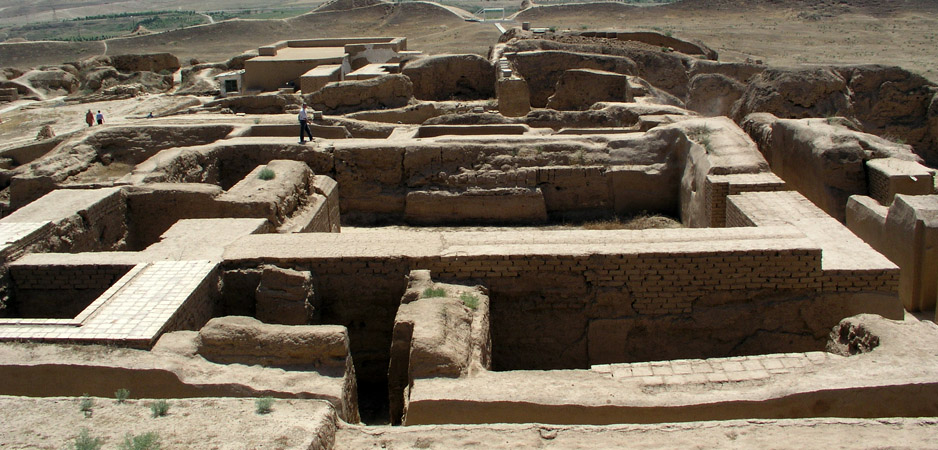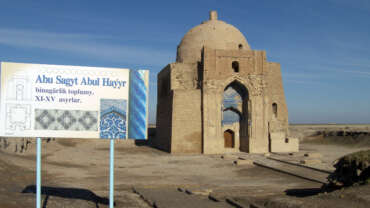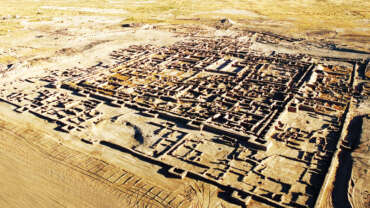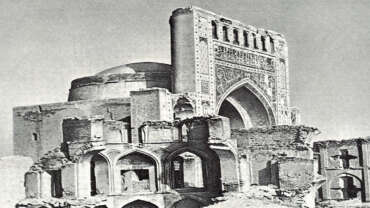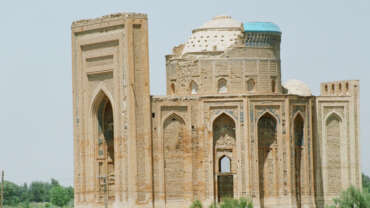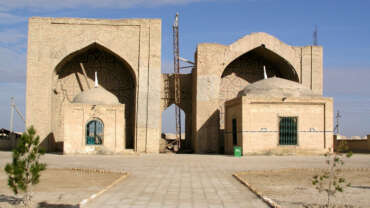Nisa
The ruins of ancient and medieval town Nisa are located not very far (only 18 km) from the Ash¬gabat in the foothills of Kopetdag mountains in Bagir village. The Parthian Fortresses of Nisa consist of two parts Old and New Nisa, indicating the site of one of the earliest and most important cities of the Parthian Empire, a major power lasted almost 600 years from the mid-3rd century BC to the 3rd century AD. Archaeological excavations in two parts of the site have revealed richly decorated architecture, il¬lustrative of domestic, state and religious functions. They conserve the unexcavated remains of an ancient civilization, which skilfully combined its own tradi-tional cultural elements with those of the Hellenistic and Roman west. Situated at the crossroads of im¬portant commercial and strategic axes, this powerful empire formed a barrier to Roman expansion while serving as an important communication and trading center between the East and the West, the North and the South.
Traces of human activity dating back to the IV-11 millennium BC show that long before the beginning of the Parthian Empire the area of Nisa was already colonized by sedentary population. It is believed that there was a large settlement there as early as the 1st millennium BC. According to the legend, during the time of Darius Hystaspes (VI c. BC) settlement be-came a frontier fortress, which barred the way to in-vade from the North warlike nomads.
In the IV century BC Achaemenid Empire col-lapsed under the Greco-Macedonian armies. Under the Seleucids – successors of Alexander the Great – formed independent states of Bactria, Parthia and Khorezm.
The dynamic development of these states is well described in the writings of ancient authors. Some ancient sources, such as Isidorus of Kharax, mention the city of Parthaunisa as an administrative and economic center for the Arsacid dynasty. From their royal residence (Old Nisa) and the adjacent city (New Nisa), the Arsacid dynasty carried out huge conquests over a very large territory stretching from the Indus to the Euphrates. Parthaunisa was divided into two parts by the range of Kopetdag Mountain. One of them is located on the territory of modem Ahal region in Turkmenistan.
It is not until 247 BC apamstribe (or parns), be-came the big association of nomads who lived in the Karakum. It was founded by Arsaces I (reigned c. 250 BC – 211 BC), and was reputedly the royal necropolis of the Parthian kings, although it has neither been established that the fortress at Nisa was a royal residence nor a mausoleum. Greek Seleucid governor of the satrapy was killed, Arzak was declared a king of independent Parthia that took the territory of Hyrcania (area south-east of the Caspian Sea), which subsequently arose the first capital of the Parthian Empire – Gekatompily.
Parfavnisa city became the administrative and economic center of ownership of Arsakid dynasty. There was arranged a burial-vault of their first kings. Suburbs of Parfavnisa was surrounded by cob wall 7 km long and the entire area with surrounding villages was also covered by the ring of walls.
The name of the site, Mithradatkert, and an indication of the date of its foundation are known from an inscription written on one of the 2,700 administrative ceramics (ostraka) found at Nisa. Mithradatkert means «the fortress of Mithidrat, referring to King Mithradat I (174-138 BCE). Under the Mithridates I (174-136 gg. BC) on the site of Old Nisa royal fortress was erected by Mitridatkert (approx. 14 hectares) with 43 towers. From the perspective of the ancient art of the castle is an impregnable stronghold. In the 11-1 centuries BC, in the heyday of the Parthian empire, Nisa achieved the status of royal sanctuary. Possibly there was a necropolis of Arsakids dynasty’s members.
Numerous archaeological discoveries made in the mid-twentieth century relating to the 111-1 centuries BC such as mins of temple, monumental clay sculptures, marble statues, a collection of iconic rhytons ivory with relief ornaments, decorations and small plastic metal and terracotta, weapons, uten¬sils, economic documents (mainly accounting wine products) written Aramaic alphabet in the Parthian language, etc. proof the period of blooming forth of Parthia.
In 226 BC, however, the Parthian kingdom collapsed. Ardashir, the Parthian governor-general in Persia at the beginning of the Sassanid dynasty, checked Parthian expansion and conquered their cities and territories. Destruction and diminished populations in Nisa led to its partial abandonment, although it continued to be an important center until the Islamic period (12th-14th century CE). Great authority of Parthian culture leading archaeo¬logical researches in Nisa over the years D.Sc. V.N.Pilipko notes: «… by the end of their reign Sassanids achieved their goal the memory about the Parthians it should seem disappeared forever. People who spoke the Parthian language, and called themselves the Parthians vanished. But the nation, as such, did not really disappear. Changing its name, language and customs, this nation continues to live on this land and there is a good deal of Parthian blood in the veins of the Turkmens of the time. Successive link of many generations living in the lands of Southern Turkmenistan, more clearly trace through the study of local culture and it largely explains the keen interest of the present population in the culture of ancient Parthia, which sees it as an integral part of its own past.
According to the opinion of the researchers, the monuments Old and New Nisa, keeping invaluable information about the material culture and art of one of the greatest ancient world power, are the key to the knowledge about Parthian culture. In 2007 UNESCO as a unique object of a long ago vanished civilization declared Nisa a World Heritage Site. A large number of elements of architectural decor of the buildings of Old Nisa are the unique.



